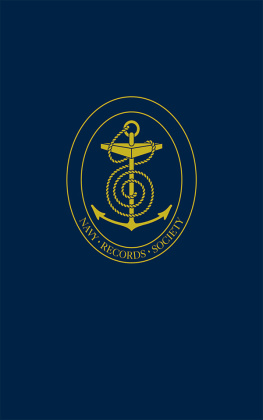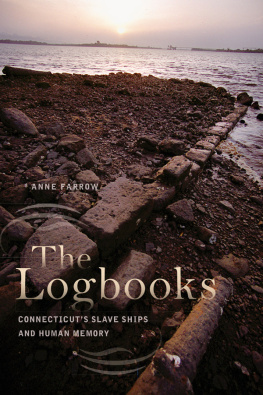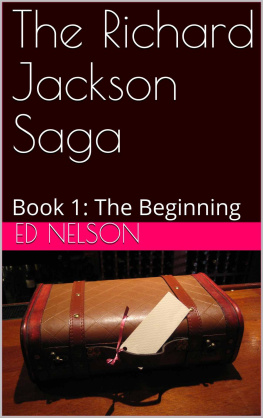THE LOGBOOKS OF THE LADY NELSON
THE LOGBOOKS OF THE LADY NELSON
WITH THE JOURNAL OF HER FIRST COMMANDER LIEUTENANT JAMES GRANT, R.N.
BY
IDA LEE, F.R.G.S. (MRS. CHARLES BRUCE MARRIOTT.)
AUTHOR OF:
THE COMING OF THE BRITISH TO AUSTRALIA,
[and]
COMMODORE SIR JOHN HAYES, HIS VOYAGE AND LIFE.
WITH SIXTEEN CHARTS AND ILLUSTRATIONS FROM THE ORIGINALS IN THE ADMIRALTY LIBRARY.
GRAFTON & CO.
69 GREAT RUSSELL STREET
LONDON. W.C.
First Published in 1915.
TO THE MEMORY OF MY GRANDFATHER,
WILLIAM LEE,
ONE OF AUSTRALIA'S PIONEERS.
View of the Lady Nelson in the Thames, from a painting in the possession of the Victorian Government
PREFACE.
The objects for which the Lady Nelson's voyages were undertaken render her logbooks of more than ordinary interest. She was essentially an Australian discovery ship and during her successive commissions she was employed exclusively in Australian waters. The number of voyages that she made will perhaps never be accurately known, but her logbooks in existence testify to the important missions that she accomplished. The most notable are those which record early discoveries in Victoria: the exploration of the Queensland coast: the surveys of King Island and the Kent Group: the visits to New Zealand and the founding of settlements at Hobart, Port Dalrymple, and Melville Island. Seldom can the logbooks of a single ship show such a record. Their publication seemed very necessary, for the handwriting on the pages of some of them is so faded that it is already difficult to decipher, and apparently only the story of Grant's voyages and the extracts from Murray's log published by Labilliere in the Early History of Victoria have ever before been published. In transcription I have somewhat modernized the spelling where old or incorrect forms tended to obscure the sense, and omitted repetitions, as it would have been impossible to include within the limits of one volume the whole of the contents of the logbooks. The story of the Lady Nelson as told by Grant has in places been paraphrased, for he sometimes writes it in diary form under date headings and at others he inserts the date in the narrative. The entries from the logbooks of Murray, Curtoys and Symons, in the Public Record Office, with such omissions as I have specified, are printed verbatim.
Murray's charts now published are distinctly valuable, as in the fourth volume of the Historical Records of New South Wales, where they should be found, it is stated that they are "unfortunately missing."
On my inquiring at the Admiralty, Mr. Perrin, the Librarian, to whom my cordial thanks are due, made a special search and was fortunate enough to discover them. Thus, after a long separation, Murray's charts and his journal are united again in this volume. Perhaps the most important chart, and the one which should appeal especially to the people of Victoria, is that of Port Phillip showing the track of the Lady Nelson's boat when the brig entered the bay for the first time. Murray's log telling of this discovery ends on March 24th, 1802. In writing later to the Duke of Portland, Governor King says: "The Lady Nelson's return just before I closed my letters enabled me to transmit Acting-Lieutenant Murray's log copies of the discoveries of King Island and Port Phillip. These important discoveries, being combined with the chart of former surveys, I hope will convince your Grace that that highly useful vessel the Lady Nelson has not been idle under my direction." The charts were sent home in charge of Lieutenant Mackellar, who sailed in the ship Caroline on March 30th, 1802, six days after the Lady Nelson's return. Duplicates were forwarded by the Speedy, which left Sydney in June, but a comparison of those at the Admiralty shows that King added nothing further to this second series.
My thanks are also due to Lieutenant Bell, R.N., whose researches have enabled me to publish the charts of the Queensland coast. These old charts cannot fail to interest students of Australian history. It is possible that they do not include all that were sent home at first, nor are the Lady Nelson's logbooks complete; those however of Grant and Murray, Curtoys and Symons, give us the story of the work carried out by those energetic seamen. They are writings worthy of being more widely known, for they are records left by men who sailed uncharted seas along unknown coasts in days which will not come againmen who have helped to give to later generations a spacious continent with a limitless horizon.
IDA LEE.
CONTENTS.
THE LADY NELSON BUILT WITH CENTREBOARDS.
HER VOYAGE TO SYDNEY UNDER JAMES GRANT.
THE FIRST SHIP TO PASS THROUGH BASS STRAIT.
RETURNS TO EXPLORE THE STRAIT.
HER VISITS TO JERVIS BAY AND TO WESTERN PORT IN 1801.
COLONEL PATERSON AND LIEUTENANT GRANT SURVEY HUNTER RIVER.
MURRAY APPOINTED COMMANDER OF THE LADY NELSON.
HIS VOYAGE TO NORFOLK ISLAND.
MURRAY'S EXPLORATION OF BASS STRAIT.
DISCOVERY OF PORT PHILLIP.
THE LADY NELSON IN COMPANY WITH H.M.S. INVESTIGATOR EXAMINES THE NORTH-EASTERN SHORES OF AUSTRALIA.
THE FRENCH SHIPS IN BASS STRAIT.
THE FOUNDING OF HOBART.
SYMONS SUCCEEDS CURTOYS AS COMMANDER OF THE LADY NELSON.
HIS VOYAGES TO PORT PHILLIP, TASMANIA AND NEW ZEALAND.
THE LADY NELSON IN TASMANIA.
THE FOUNDING OF PORT DALRYMPLE.
THE ESTRAMINA IS BROUGHT TO SYDNEY.
THE LADY NELSON VISITS NORFOLK ISLAND AND PORT DALRYMPLE.
TIPPAHEE AND HIS FOUR SONS ARE CONVEYED TO NEW ZEALAND IN THE LADY NELSON.
THE LADY NELSON ACCOMPANIES H.M.S. TAMAR TO MELVILLE ISLAND.
THE LOSS OF THE LADY NELSON.
ILLUSTRATIONS.
Drawn by Governor King. Writing of this chart, he says that the longitude in which Lieutenant Grant placed Cape Otway was about a degree and a half in error. He also made the land to trend away on the west side of Cape Otway to a deep bay, which he named Portland Bay. An examination of modern maps will show that the name Portland Bay has been retained for a bay to the westward of Grant's Portland Bay, which is now called Armstrong Bay.
Chart of the track of His Majesty's Armoured Surveying Vessel Lady Nelson Lieutenant James Grant Commander. From Bass's Straits between New Holland and Van Diemen's Land on her passage from England to Port Jackson. By Order of His Grace The Duke of Portland. In December 1800.
Drawn by Ensign Barrallier, New South Wales Corps, under the direction of Captain P.G. King, Governor of New South Wales." This chart is generally referred to as "Barrallier's Combined Chart." King doubtless alludes to it when writing to the Duke of Portland in May 1802. See Historical Records of New South Wales volume 4 page 761.)
(CHART OF KING'S ISLAND IN BASS'S STRAIT. This earliest chart of King Island was drawn by Alexander Dalrymple from a sketch made by Flinders of Murray's original chart. Flinders added to it the west coast unseen by Murray, though it had been sighted by both Black and Buyers. The details given by Flinders were supplied by William Campbell, master of the Harrington, who, in March 1802, found a quantity of wreckage there. Nothing remained to show the name of the lost vessel, nor was any clue subsequently discovered by which she could be identified. The Harrington lay at anchor at New Year's Isles for over two months, but could not trace the nationality of the vessel or her crew except in the language of the Harrington's captain, "one dead English cat." See Historical Records of New South Wales volume 4 page 780.)













